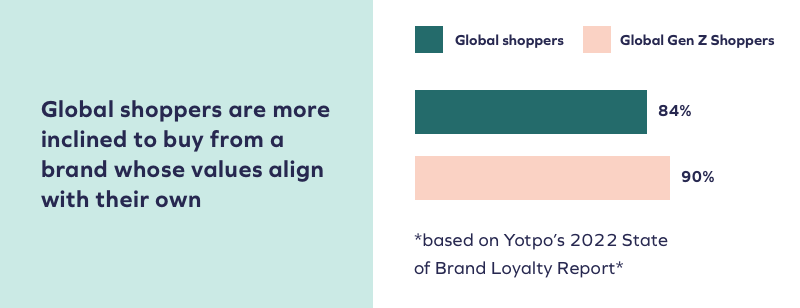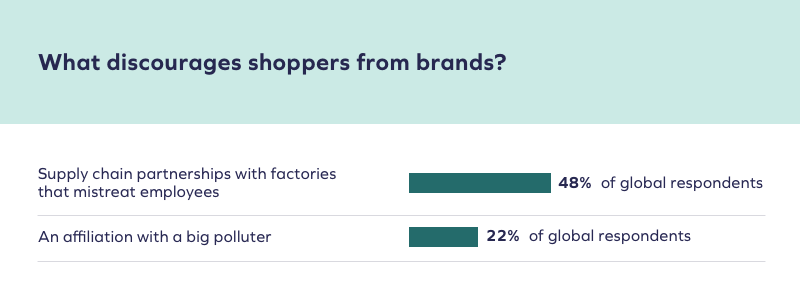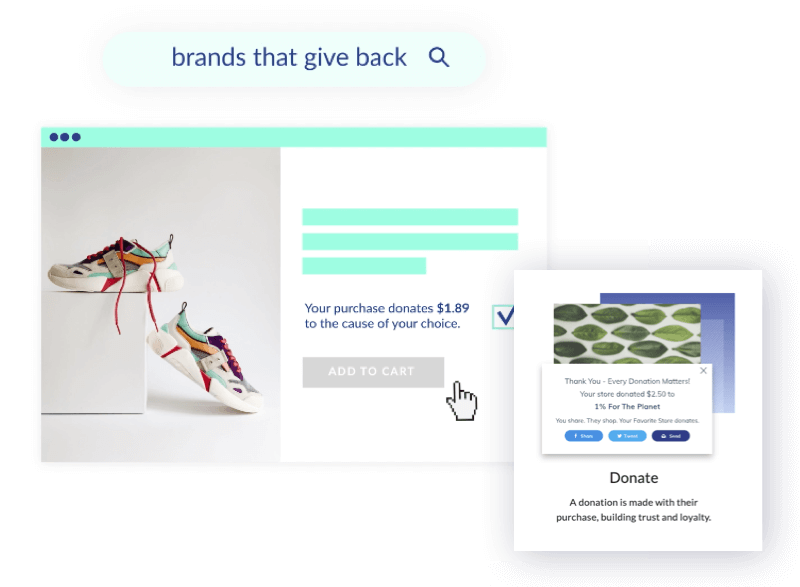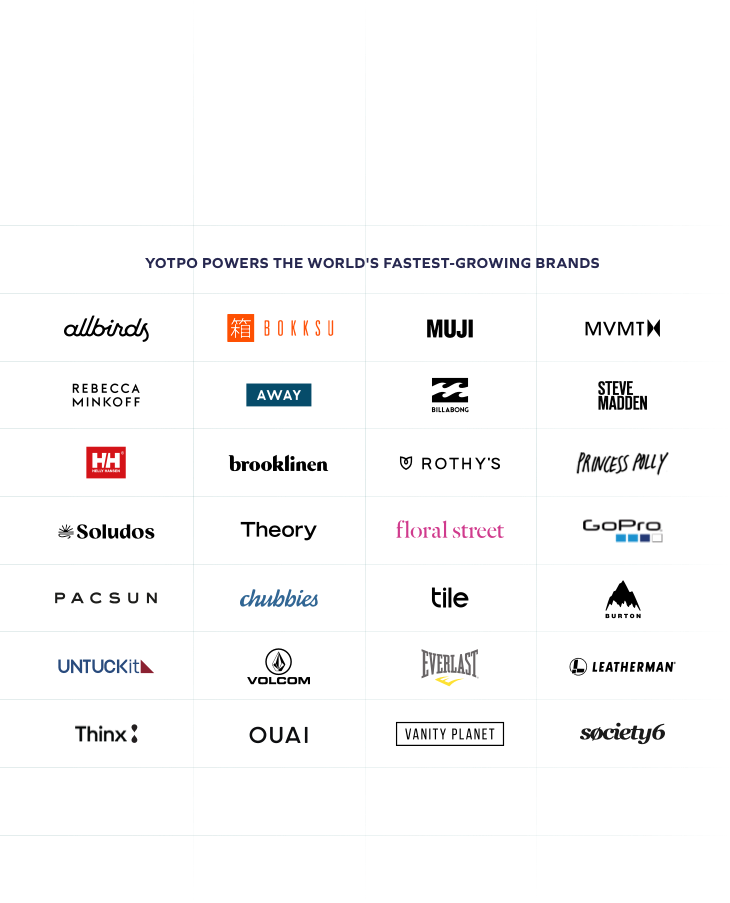As sustainability initiatives accelerate within and beyond the eCommerce landscape, shoppers are beginning to keep score, and not just with their wallets. The buzz surrounding eco-friendly brands continue to grow at a rate that doesn’t appear to slow down. With that, winning consumers now requires more than just implementation. The Intergovernmental Panel on Climate Change’s (IPCC) 2021 end-of-year report alerted consumers and brands directly impacted by the global climate change crisis.
This report inspired immediate action, and consequently, sustainability and eco-friendly initiatives are becoming standard practices for eCommerce brands. This progress raises another challenge for eCommerce brands — marketing. Informing consumers about new sustainable initiatives and other value-centric business practices is no easy feat.
Nonetheless, with the right marketing campaigns, partnerships, and best practices, brands can increase engagement, build brand loyalty, and help the environment while doing so. Let’s take a closer look at some tried and tested sustainable marketing campaign ideas and how eCommerce brands are leading the way in sustainability.
1. Make your commitment to sustainability known
While it’s possibly the most forward marketing tactic, communicating transparency within sustainability is often overlooked. In the wake of hyper-visible digital marketing spaces — social media — the trend of transparency between brands and consumers is climbing. Pulling from Yotpo’s 2022 State of Brand Loyalty Survey, approximately 85% of global consumers, and 90% of global Gen Z shoppers, are more willing to buy from a brand whose values are in line with their own. Likewise, many of the values consumers cited as purchasing influencers involve issues like sustainability, eco-friendly initiatives, and fair trade practices.

This means shoppers are more inclined to support brands that say that they care about similar causes and can also show it. Providing your customers with information on how you are approaching sustainability, implementing eco-friendly practices, or supporting charitable causes strengthens trust between your brand and your customers. Some ways you can communicate this information effectively include: adding a page to your site with your brand’s mission statements and values (which can be linked to on product pages), communicating sustainability efforts in new subscriber welcome flows (via SMS or email), regularly posting about brand values on social, integrating charitable donations into your loyalty program, and naming loyalty tiers after particular values or causes close to your brand.
2. Show your local vendors with similar brand values some love
Another way to connect with your customers with sustainable marketing, also known as green marketing, is to promote local vendors, nonprofits, or companies with similar brand values. Essentially a co-marketing effort, this strategy helps your brand reach new customers that might not know about your shared values with brands, individuals, and organizations they already support.
One brand successfully executing this strategy is the Yotpo Grow brand, Sustainable Home Goods. Sustainable Home Goods founder, LaToya Tucciarone’s, mission is to “partner with artisan entrepreneurs to sustain jobs in their communities both globally and locally, as well as creating the potential for new ones.” The brand sources their products from local artisans and actively highlights local vendors on social media, bringing awareness to their brand’s commitment to fair trade and sustainability, and also reaching new audiences.
3. Educate your customers on climate-neutral shipping best practices
Another marketing campaign idea is to educate shoppers and show how your company is using recycled or recyclable materials and shifting toward climate-neutral shipping. It’s no secret that climate-neutral shipping or using eco-friendly packaging materials is more expensive. However, shoppers are willing to lower price considerations (e.g. will pay more for eco-friendly shipping) if a brand is sustainable.
A few ways to effectively inform and communicate sustainability best practices to your shoppers include: providing educational information in your brand’s onboarding messaging for new subscribers, listing the amount or types of recycled materials used on your product pages, and creating a product page guide to inform customers on how to recycle or reuse packaging.
Additionally, educating shoppers and providing instructions, via SMS or email, on how to properly recycle the packaging materials used to ship your products, makes it more convenient for your customers to reach their sustainability goals, reinforcing your brand’s eco-friendly approach.

*based on Yotpo’s 2022 State of Brand Loyalty Report*
4. Focus on reducing return rates
Promoting climate-friendly returns is a great way to demonstrate your brand’s eco-friendly packaging. Going a step further, focusing on reducing return rates also demonstrates your brand’s commitment to sustainability. Essentially, fewer returns means fewer carbon emissions. Brands that focus on reducing return rates by analyzing customer feedback generated from customer reviews, provide actionable insights that can help enhance brands’ products.
Enhanced products coupled with an effective review strategy, whether that be improved quality, sizing, product descriptions, or shipping, can help lower carbon emissions used during the return process. Further, an effective review strategy also inspires shoppers to feel confident about your products, giving them all the information they need to make the correct choices at checkout the first time. Displaying product reviews about sizing, quality, shipping, installation, etc. provides shoppers with the best information possible — thorough and thoughtful reviews about your products directly from other customers — empowers shoppers to feel confident at check-out and to meet their expectations, reducing the risk for returns.
For instance, Greats, a shoe brand on a mission to provide durable fashion-forward shoes, knows that not all of their shoes have the same size across the board and shoes fit differently on customers. By using analytics and reviews, more specifically, by creating customized Review Forms that ask shoppers for specific feedback about product fit, Greats is reducing their return rates. The actionable insights provided by customers help lower return rates, thus reducing carbon emissions, and ultimately contributes to echoing the brand’s commitment to sustainability.
5. Show off your eco-friendly and sustainably-sourced products
Just as customers value climate-neutral shipping and eco-friendly packaging, shoppers also look out for sustainably sourced materials in the products they purchase. Letting your customers know that your products are made from eco-friendly materials or are sourced sustainably can help brands stand out among the competition.
One brand successfully showcasing the eco-friendly materials used in their products is On Running. On, a shoe brand on a mission to turn carbon emissions into running shoes educates their customers on the technology behind how they sustainably source the materials used to craft their running shoes. By educating customers about the technology used to transform carbon emissions into reusable energy and materials, On is empowering shoppers with every purchase. Featuring this information directly on-site, in product descriptions, on social media, and through educational articles, On is able to stand out from the competition.
6. Engage with customers through causes close to your brand
Analogous to highlighting local vendors and organizations with similar brand values, is partnering with sustainability-focused organizations and nonprofits. Partnering with organizations whose whole mission involves sustainability can help raise brand awareness, strengthen trust with your customers, and display sincerity in your brand’s commitment to sustainability.

Example of on-site donations integrations
For instance, Yotpo’s integration with ShoppingGives helps provide easy-to-use social-impact solutions for D2C eCommerce brands. Organizations like ShoppingGives, give brands such as Greats and Steve Madden, the tools to seamlessly connect and donate to charitable organizations of their choice. Largely, it allows brands to reward customers for donations or to redeem rewards as a donation, thus educating customers and connecting them to causes close to your brand. Circling back to the first strategy, integrations like ShoppingGives help brands reinforce their values to their customers, strengthening emotional connections with their customers.
7. Create a “for you and for X” program
Popularized in the early 2000s by brands like TOMS, another successful marketing strategy involves paying it forward via a “for you and for (insert cause of your choice)” program. These programs go beyond sustainability and can raise awareness and support other causes your customers care about, such as food insecurity, houselessness, and more. These programs can also be easily injected into your existing loyalty program and can generate an emotional connection between you and your customers.
Tentree, a sustainable fashion brand, aims to protect the environment that has been impacted by harmful manufacturing practices, by planting 10 trees for every item purchased. Tentree provides customers with unique QR codes associated with the specific trees planted from each purchase to close the gap between their commitment to sustainability and customer engagement. By signing up for an Impact Wallet associated with their loyalty program, Tentree enables shoppers to feel connected to their sustainability initiative. Customers can create an interactive digital forest that mirrors the one Tentree and their shoppers are growing in reality, by simply scanning the QR codes from their purchases and adding them to their loyalty account.

Tentree’s on-site live tree’s planted counter
8. Communicate your sustainability mission across multiple channels
Lastly, another successful marketing campaign to show your brand’s commitment to sustainability is by leveraging innovative digital marketing strategies. While physical marketing tactics can sometimes market your brand when your customers are offline, today, consumers are spending less time offline and more time online via their mobile devices. According to a recent survey, consumers are spending around five hours online daily. Because shoppers are spending so much time online, typically on their smartphones, leveraging social media marketing and SMS marketing strategies is now becoming the most effective and environmentally friendly way to win shoppers.
In a recent survey, consumers are citing SMS as a more engaging way to interact with brands — 47% of shoppers are more likely to see a brand’s message if it’s via text compared to an email. If you want to quickly and effectively communicate your brand’s sustainability efforts in time for Earth Day, or during other time-sensitive value-centric marketing opportunities, SMS is the best solution to do so.
Namely, The Parks Project successfully uses SMS to communicate new releases and upcoming sales, in addition to educating customers about the brand’s mission and commitment to sustainability. By understanding that audiences and shoppers are spending more time on their phones, The Parks Project wanted to reach their customers and inform them about upcoming collaborations with the parks they support and work to preserve.
Green marketing is here to stay
In all, highlighting your brand’s sustainability efforts helps build trust with customers, strengthens emotional connections, and reinforces the importance of protecting the environment and giving back to other important causes. In a time of rapid expansion in eCommerce, it’s more important than ever to reinforce sustainability among consumers. Ultimately, it’s important to remember that sustainability takes time, and every brand has to start somewhere. It is important to remember that we’re in this together, aspiring for a more sustainable future.
Sustainability Marketing FAQs
Why is sustainability becoming increasingly important for eCommerce brands?
As the global climate change crisis gains widespread attention, consumers are becoming more conscious of their purchasing decisions. Sustainability has become a key factor in influencing consumer choices, and brands that align with eco-friendly practices and values are gaining favor among shoppers. Emphasizing sustainability not only helps the environment but also builds trust and loyalty with environmentally-conscious customers, leading to a competitive advantage in the eCommerce landscape.
How can small and medium-sized eCommerce brands adopt sustainable practices without compromising profitability?
Small and medium-sized eCommerce brands can adopt sustainable practices by taking incremental steps. They can start by identifying areas where they can make eco-friendly changes, such as using biodegradable packaging materials, optimizing supply chain routes to reduce emissions, or partnering with local vendors for sustainably-sourced products. Implementing sustainable practices not only attracts eco-conscious customers but can also lead to cost-saving opportunities in the long run.
How can sustainability be integrated into a brand’s loyalty program?
To integrate sustainability into a brand’s loyalty program, consider tying loyalty rewards to sustainability actions, enabling charitable donations via loyalty points, or naming loyalty tiers after sustainability values.
What are some effective techniques to educate customers about climate-neutral shipping?
To effectively educate customers about climate-neutral shipping, eCommerce brands can include details about the brand’s practices in product descriptions, create a page on the website that explains the brand’s commitment to climate-neutral shipping, use welcome emails or SMS messages to share information about the brand’s sustainable shipping practices, add stickers or brochures inside packages that inform customers about the brand’s eco-friendly shipping approach and encourage them to recycle the packaging, or launch awareness campaigns on social media platforms, showcasing the brand’s efforts to reduce its carbon footprint.














 Join a free demo, personalized to fit your needs
Join a free demo, personalized to fit your needs